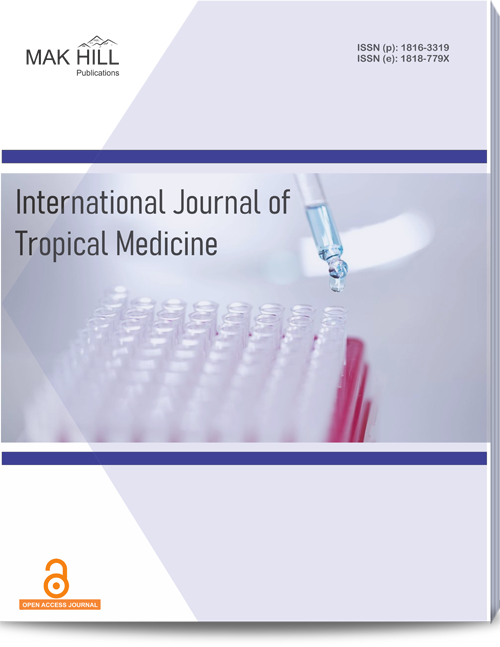
International Journal of Tropical Medicine
ISSN: Online 1818-779XISSN: Print 1816-3319
178
Views
14
Downloads
Abstract
Methicillin‐resistant Staphylococcus aureus (MRSA) is a common pathogen capable of producing various clinical illnesses. It was initially reported in hospitals (hospital‐associated or HA‐MRSA) but was later also observed in communities (community‐associated or CA‐MRSA). Molecular characterisation of MRSA can help predict its spread and treatment. The study aimed to determine the morphological and antibiotic‐resistant profiles of S. aureus isolates and the determination of responsible genes in Hospital and community settings. Of a total of 150 staphylococcus aureus isolates, 45 were MRSA. Where 18 were from hospitals and 27 were from the community. The phenotypic and genotypic methods were used to categorize HA‐MRSA and CA‐MRSA. Out of 45 strains processed for SCC mec typing, 16(35.6%) had SCC mec type III, 13 (28.9%) had SCC IV type, 7(15.6%) had SCC mec III type, 4(8.9%) and 5 (11.1%) had not been detected. Out of 45 MRSA isolates, 40 MRSA strains were mecA gene and were subjected to detection of the PVL gene., it was positive in 29. In this study, 16(35.6%) had SCC mec type III, 13 (28.9%) had SCC IV type, 7(15.6%) had SCC mec III type, 4(8.9%) and 5 (11.1%) had not been detected. Molecular methods such as Rt‐PCR are useful in detecting HA‐MRSA and CA‐MRSA strains from the clinical isolates. Molecular typing techniques such as SCCmec typing are useful in identifying the strain types circulating in the healthcare setting.
How to cite this article:
Sanil Yadav, Madhurendra Singh Rajput and Chaudhary Devendra. Phenotypic and Molecular characterization of Methicillin‐Resistant Staphylococcus Aureus Isolated from Tertiary Care Hospitals.
DOI: https://doi.org/10.36478/10.36478/makijtm.2024.3.178.183
URL: https://www.makhillpublications.co/view-article/1816-3319/10.36478/makijtm.2024.3.178.183